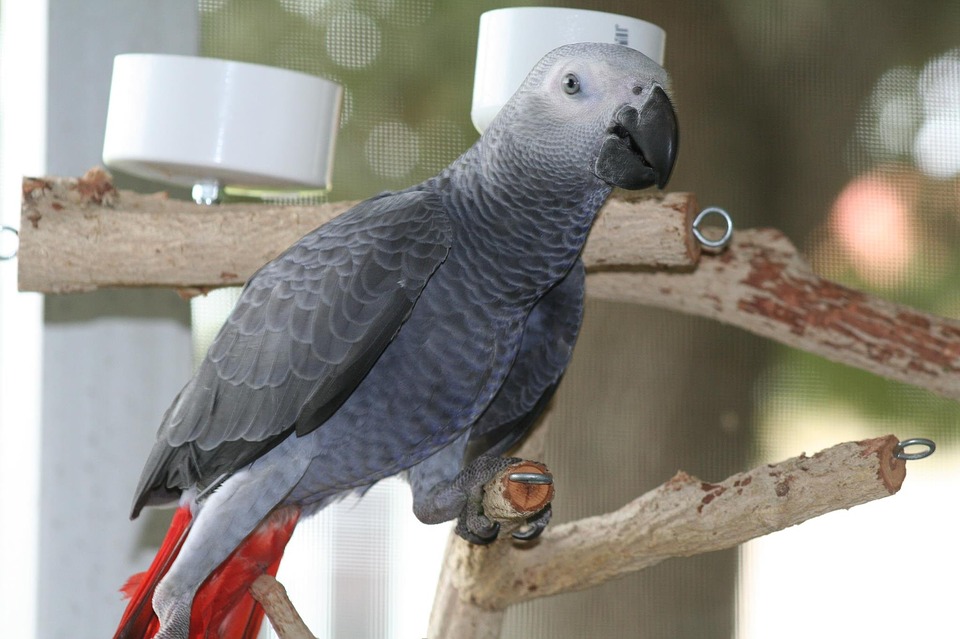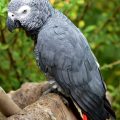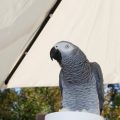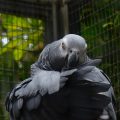Table of Contents
African Grey parrots can’t speak and tell you what they’re thinking through words, so understanding them through body language is the next best thing. After all, body language says a lot about you, and this holds true for animals and birds too. Your African Grey communicating can be telling you a million things through subtle cues, so you have to be observant to not miss these messages. Being watchful of the signs your African Grey communicating leads to better understanding it, helping you develop and strong and trusting relationship that can last a long time.
Picking up the signals they send can enable you to form a solid bond. Being attuned to their needs and wants can help you know when it’s feeling fine or when he’s ill. This is certainly useful when detecting sickness and preventing it from progressing.
Most animals are open books; they don’t really know how to hide what they’re feeling in the way humans do. Once you have learned the usual signs and signals, understanding what your African Grey communicating feeling will come easier with time and practice. You will know when your pet bird is happy, excited, wary, or terrified just by noticing its eyes, stance, and reactions.
EYES
Eye Pinning
When it comes to African Grey communicating, an African Grey’s pupils can contract and expand when it sees something that either excites or threatens it. It depends on the context: If your African Grey’s eyes are pinning while the rest of its body is relaxed, then it probably sees something interesting, such as a new toy. On the other hand, if you observe pinning while the African Grey’s feathers are puffed out, then be careful because it is probably angry or frightened and thus has a tendency to attack through biting.
Pinning in parrots is a normal behavior
better observed in some types than in others. How well you can see the pinning
relies on the color of the bird’s irises and how much they blend with the
pupil.
Partially Closed Eyes
If you see your African Grey partially close its eyes while you’re petting it or smoothing its feathers, it means that they are content. You should continue your ministrations, perhaps until your parrot falls asleep.
FEATHERS
Preening
Preening can only be done by a completely relaxed bird who is confident with the knowledge that its environment is safe. To preen, your African Grey communicating would need to bury its head in its feathers or under its wings, which can be a show of vulnerability. In the wild, African Greys only preen when there are no predators nearby. In captivity, they preen when they trust you or everyone in their immediate vicinity.
For preening, birds use the preen gland located just above their tails. This gland produces the oil your African Grey communicating uses to rub on its feathers in order to clean itself. This is important to keep your African Grey’s skin from being dry, which could cause irritation and itchiness. If you have two African Greys, they will spend their time preening each other as a bonding activity.
Fluffing
Usually, an African Grey fluffs up its feathers to release tension, much like how humans stretch their muscles. They typically do it before preening, so that all the dust or particles trapped in their feathers can be shaken loose.
Fluffing up can also be a sign of excitement or greeting, along with stretched-out wings. However, if your African Grey fluffs out its feathers for a prolonged period, then it may be not feeling well. You should contact your avian veterinarian immediately to check if it is a sign of illness that needs to be treated.
HEAD AND BEAK
Bowing and Bobbing
If your African Grey communicating bows and bobs its head, it typically means it’s asking for your attention. Sometimes, African Greys do it to ask for food or water. It can also be a sign of excitement and interest. Be careful, however, and learn to distinguish if the movement is a simple “Give me attention” technique or if it could be a sign of illness.
Lowered Head and Neck Out
If your African Grey adopts this stance, dropping its head towards you, it means it wants to be petted and given attention.
Beak Grinding
African Greys grind their beaks to show their contentment. They usually do this whenever they are about to fall asleep. This is a good sign since it means your African Grey is relaxed and satisfied.
Yawning
If your African Grey is yawning, it means it’s either tired or has a piece of food stuck in its esophagus. It’s best to double check to ensure your parrot isn’t choking.
BODY, LEGS, AND FEET
Body Quivering
A shaking body usually means your African Grey is feeling scared or threatened. It may be feeling distrustful of its current environment. If this is the case, your African Grey’s eyes will also be dilated and your pet will be breathing heavily as well. Sometimes, however, a quivering body is a sign of illness, in which case you have to consult with an avian veterinary immediately.
Crouched Legs
If your African Grey is crouched down on its perch with its wings extended, then it’s a sign that it’s about to take off. If it’s leaning forward with its wings shaking, it’s about to launch itself at you, so you better brace yourself.
Remember: the better you communicate and understand your African Grey parrot, the better and stronger your bond will be. Keep a watchful eye out and respond accordingly to what you observe, and you and your African Grey can enjoy a trusting bond for a long time!






 Author and long-time animal lover. Sharing knowledge on pet care through experience and the written word.
Author and long-time animal lover. Sharing knowledge on pet care through experience and the written word.